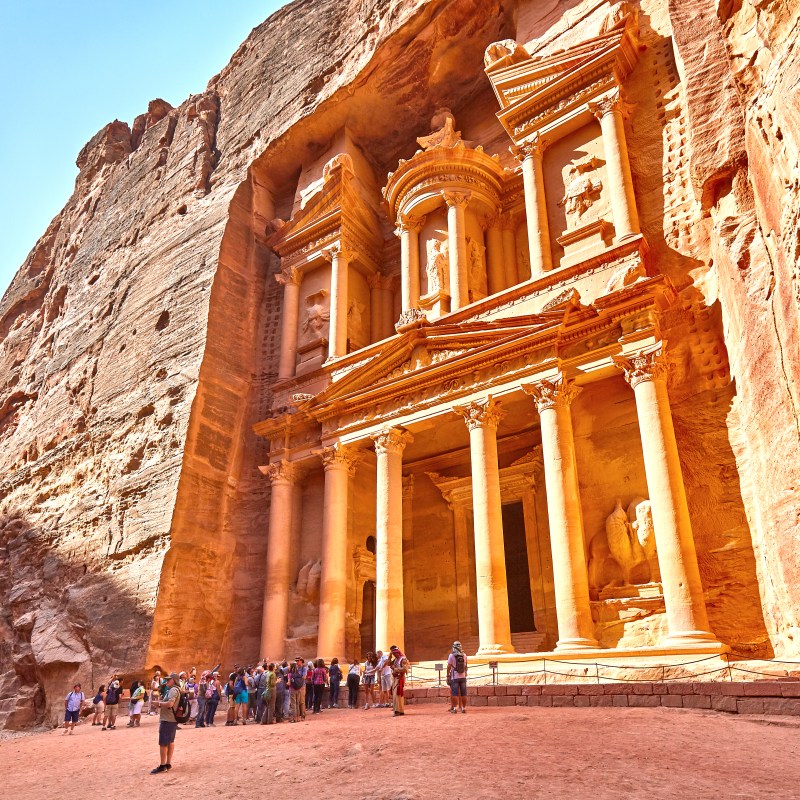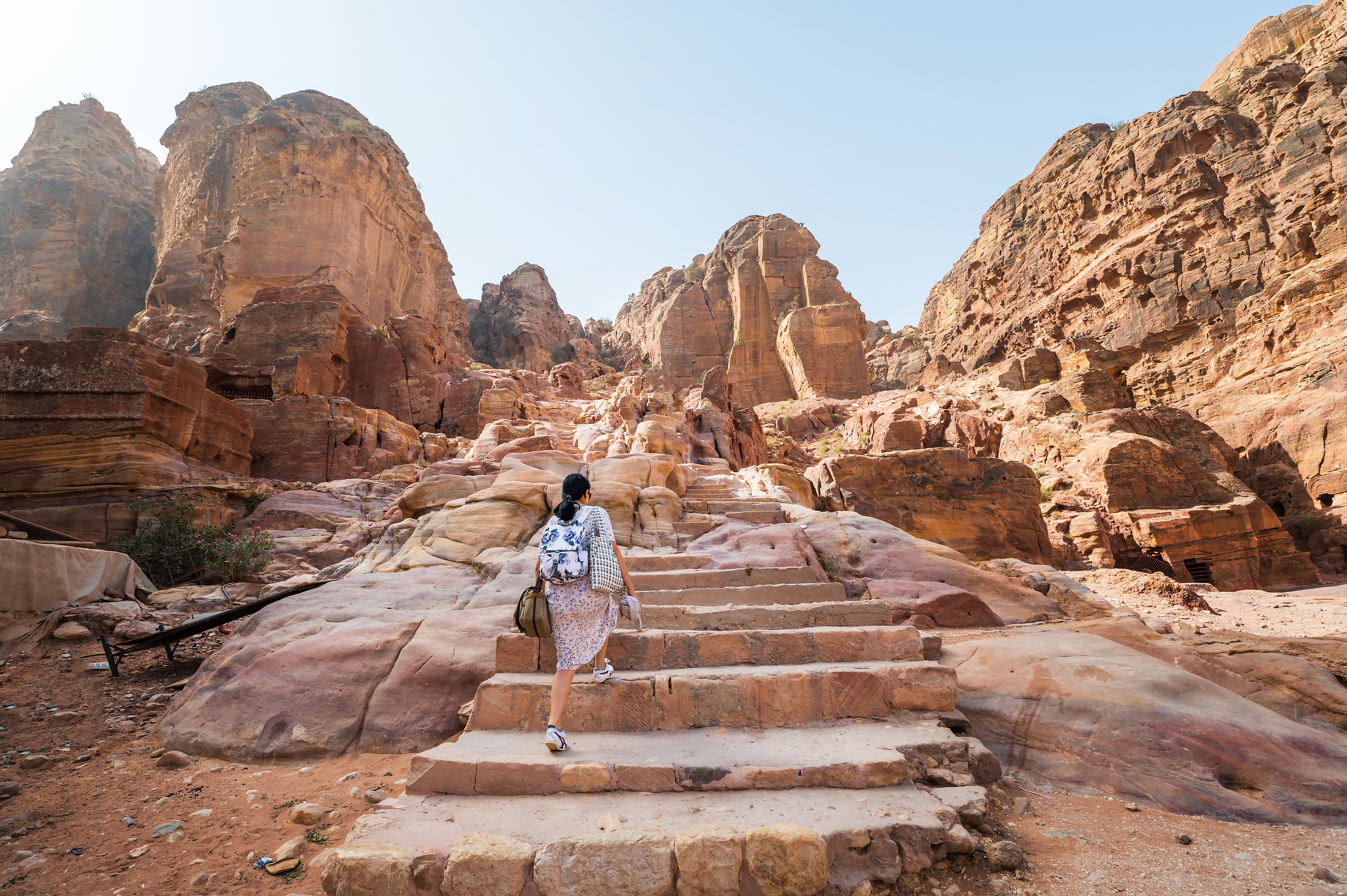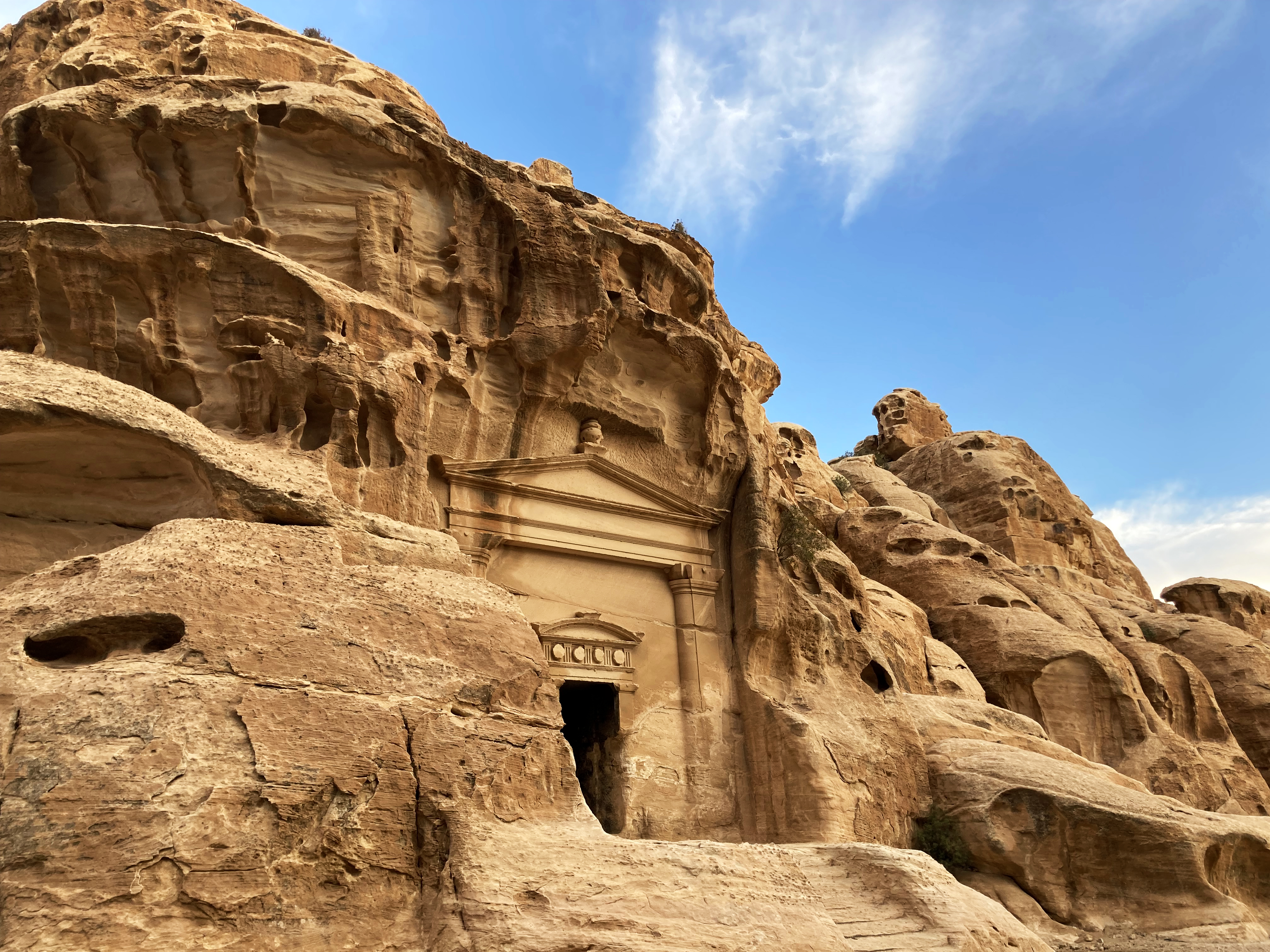
Petra is one of the most iconic destinations in the world.
Videos by TravelAwaits
Even those who don’t know anything about the country of Jordan have probably seen pictures of Petra’s grand facades carved into a cliff face.
Sometimes called Rose City, this ancient wonder is a hugely important tourist attraction in Jordan—one that usually brings close to one million visitors to the site each year. For local Bedouin people, those tourism dollars are an important part of their livelihood.
Unfortunately, military actions in the region have seen visitor numbers drop drastically over the last year. Even though Jordan has steered clear of major conflicts, and is a country known for its balance of ancient traditions and modern habits, many have decided it’s too risky to visit.
In short, tourist numbers in Petra are dropping drastically.
That makes it a sneakily fantastic time to visit. (Again, let me re-iterate: Jordan is safe and removed from conflicts happening in other countries.)
If you’ve been wanting to visit Petra but feel hesitant, let me sell you on the idea.
Why now is the time to visit Petra

Reason #1: You’ll have the place (mostly) to yourself
The high season in Petra runs from spring to autumn. Many guests who want a sense of solitude plan their trip over the winter period, which is also cooler.
But with dropping visitor numbers, you’ll have the place largely to yourself. That makes exploring the main drags of this 102-square-mile site (yes, Petra is huge) more relaxing and awe-inspiring.
Reason #2: Fewer guests = better hospitality
The Middle East is already renowned for its hospitality, but you’re in store for a more meaningful experience with fewer guests. (Although you might also be the target of more hawkers.)
This is particularly important in the town of Petra rather than just inside the historical site, as you can find better deals on tours and activities, along with locals who are more interested in engaging with visitors.
If cross-cultural exchanges are high on your priority list, stick to winter visits. You’ll find more chances to interact meaningfully with fewer tourists around you.

Reason #3: You’ll see tombs, temples, and canyons when you visit Petra
Like I just mentioned, Petra is way larger than most people think. To reach the most famous buildings in Rose City, you first need to hike through canyons and up a hill with steep cliffs. Along the way, you can explore a massive amphitheater, multiple tombs, sacrificial areas, and the former city center.
Reason #4: It’s a multi-day adventure, not a day trip
That brings me to my next point: Petra is best experienced over the course of many days. Not only does that put less pressure on the site from a traffic standpoint (day trips degrade destinations quickly), but it also lets you take your time as you explore one site to the next.
The Royal Tombs aren’t quite as well-known as the famous facades from Petra’s ancient city center, for example. And to reach another hotspot, The Monastery, you need to scale close to 1,000 ancient steps.
(Pro tip: don’t ride on any animals unless you feel strongly that they’re well taken care of. Animal welfare at Petra is a hot topic at the moment.)

Reason #5: When you visit Petra, you visit one of the Seven Wonders of the World
Petra is one of the New 7 Wonders of the World, which was established back in 2001. Petra is joined by Chichen Itza, Machu Pichu, Christ the Redeemer, the Taj Mahal, the Great Wall of China, and the Roman Coliseum.
If crossing those destinations off your bucket list is a priority, then don’t leave Petra as a day trip or an afterthought. Make your experience in Jordan one of a lifetime—which is a much easier task when there are fewer tourists to contend with.
Reason #6: You’ll get to learn about the Middle East as it really is—not what you read in the news
If your sole focus is on seeing the famous facades of Petra, you might not care too much about experiencing Jordan and its capital, Amman.
However, your trip to Petra is an opportunity to take a closer look at life in the capital. You can explore Roman ruins and citadel, along with modern activities like the Museum of Popular Traditions—a great intro to life and culture in Jordan.
The downtown area is bright and lively, full of food stalls and restaurants that serve up local favorites like lamb and rice. Come for the ancient stone city, stay for the vibes.
